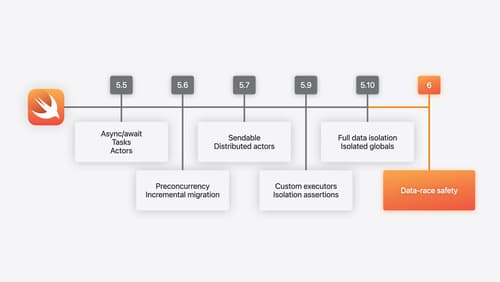can non escaping closure capture surrounding context in swift ?
Asked on 2024-08-09
1 search
Yes, non-escaping closures can capture surrounding context in Swift. When a non-escaping closure captures a variable, it captures that variable by reference. This allows changes to the variable to be observed in the original scope and vice versa. Since the closure is non-escaping, it does not change the lifetime of the variable, and the closure can handle this by just capturing a pointer to the variable's allocation.
For more details, you can refer to the session Explore Swift performance (28:29).

What’s new in Swift
Join us for an update on Swift. We’ll briefly go through a history of Swift over the past decade, and show you how the community has grown through workgroups, expanded the package ecosystem, and increased platform support. We’ll introduce you to a new language mode that achieves data-race safety by default, and a language subset that lets you run Swift on highly constrained systems. We’ll also explore some language updates including noncopyable types, typed throws, and improved C++ interoperability.

Migrate your app to Swift 6
Experience Swift 6 migration in action as we update an existing sample app. Learn how to migrate incrementally, module by module, and how the compiler helps you identify code that’s at risk of data races. Discover different techniques for ensuring clear isolation boundaries and eliminating concurrent access to shared mutable state.

Explore Swift performance
Discover how Swift balances abstraction and performance. Learn what elements of performance to consider and how the Swift optimizer affects them. Explore the different features of Swift and how they’re implemented to further understand the tradeoffs available that can impact performance.
